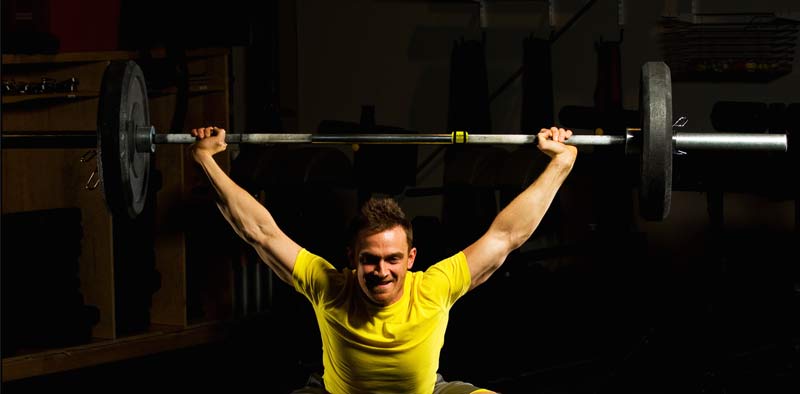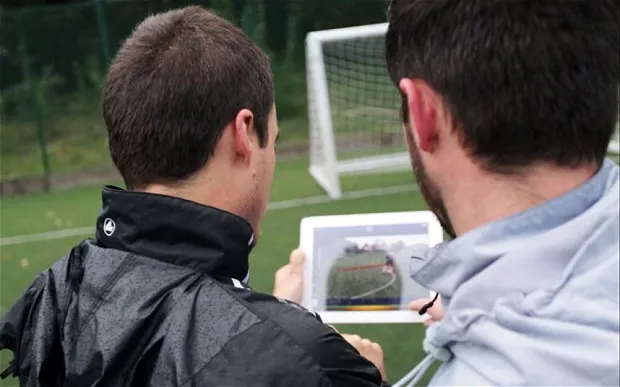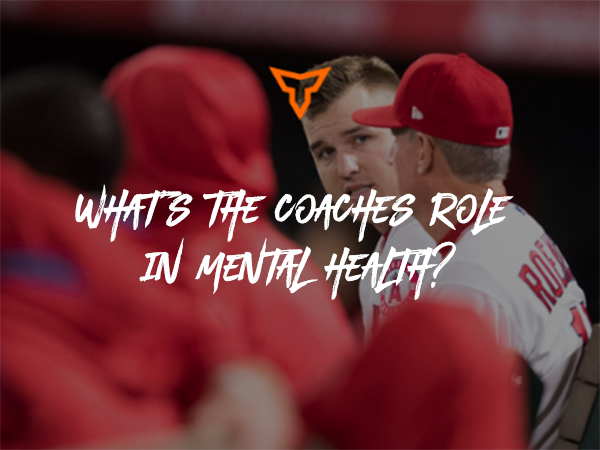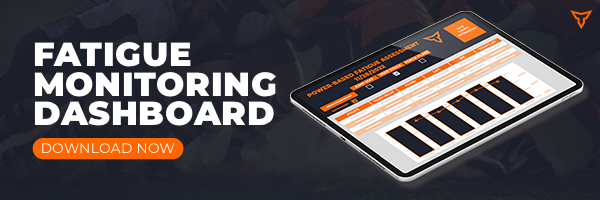We all know that feeling; a big lift is coming up, maybe you’re a bit tired and sore from practice, a bit dehydrated, and not really feeling it, and then that song comes on. The whole team starts getting hyped, jumping around, shouting the words, amping you up to hit that lift. You get under the bar and absolutely demolish a PR, making it feel like a warm-up rep. This is common in weight rooms, locker rooms, and practice venues across the world. Anyone who has played or coached sports knows that feeling and has had music shape their performance in some way. This is the power music has to elevate our performance.
Preparation
Starting off, music can be used to get us in the ‘zone,’ allowing us to get our heads right before a practice, game, or lift. Music can help block out distractions, improving focus, by connecting certain songs to certain emotions. This is often used as a trigger, assigning a certain song to know when it is time to perform. This could extend to playlists as well, selecting certain songs, in a certain order, to elicit certain emotions and mental states, as well as reduce pre-game anxiety or pressure. Along with setting the zone mindset, music can help improve morale and confidence. There are always certain songs that when played, no matter how hard practice or lifting was, everyone will start singing along to and the whole team improves their morale on the spot. Pre-season camps often include rituals around music to bond in the form of karaoke, rap battles, etc. This is an important step in the development of a successful team and culture, bringing everyone together under shared experiences.
Studies into music utilization during pre-game warmup looked at high school volleyball teams that were allowed to create their own pre-game playlists that would be played during their warmup. Athletes reported feeling more in the zone and focused during warmups as well as more confident in their ability to perform during the upcoming game. Their coaches also reported their athletes looked more dialed in and confident during warmups with the music. Finally, these studies also showed that rituals often emerged from this practice around the selection of the music for the playlists each season, which the coaches reported having a bonding effect on their team.
Finally, some studies have shown that breathing and heart rate can match the tempo of music. When preparing for competition, elevating the heart rate and breathing rate going into warm-up can help improve focus and intensity from the start. As alluded to previously, this can also be used to calm down the anxious athlete by introducing music at a moderate tempo to help regulate their breathing and heart rate. Either scenario allows the athlete to be more prepared for pre-game, practice, or lifting. Studies also showed a significant power output increase when music was included during exercise testing. This can be especially important in sports that include a significant power requirement such as barbell sports, wrestling, or throws athletes. Finally, when we listen to music we like, we start to feel good due to the release of endorphins. Utilizing this prior to competition creates a natural ‘high’ athletes can ride into their competition, allowing them to start off more excited and energized for the performance.
During Competition
As mentioned in the previous section, breathing and heart rate can match the tempo of music, with some runners using this to keep a certain pace or train certain zones. This can also be utilized with high intensity workouts, helping keep a certain pace to be able to complete it. Studies have also shown that including music in a workout can reduce the overall rating of perceived exertion (RPE), as well as improve the overall enjoyability of the session. Finally, research showed that when music was applied to exercise, power output significantly increased. Applications of these findings point to a high-tempo, energetic music prior to practices, games, or lifting to improve power, and mood prior to competition.
Since most competitions do not allow music during the actual competitive period, music utilization during performance mostly applies to practice and lifting. A lot of the same points made in the previous section apply to during performance. Including high-tempo, high-energy music to practice can keep the team in a good mood and perform at a higher level, if the team is disciplined to understand practice still needs to get done. This is still an important strategy to consider since having a team with high morale, that enjoys coming to practice or lifting, will ultimately perform better than the team that isn’t as excited. Using the example in the introduction, maybe that athlete could have hit that lift without music, but if they hit it easier with music, the body still overcame the adaptation and made the lift. If the goal in the weight room is increasing performance in their sport, then music should be an obvious addition to lifting and practice.
Post-Competition
Following competition, our bodies are still in a sympathetic state, so it is important for recovery to shift to a parasympathetic state. Similar to warming up, music can be used to calm athletes down and shift them into a parasympathetic state following competition. Utilizing the tempo again, to match the breathing and heart rate can help athletes slow themselves down between practice or lifting, and film sessions, helping them be able to focus more on the film session while not being wound up. Bringing athletes down after a competition also allows for our recovery hormones including testosterone, IGF-1, HGH and insulin, to start repairing the body. For maximum effectiveness, music should be introduced in the locker rooms and athletic training rooms to initiate the parasympathetic nervous system and start the recovery process as soon as possible.
Conclusion
Throughout this article, there have been examples of how music influences performance in athletes. Physiologically, music can influence breathing and heart rate, matching the tempo of the song. Music introduced before and during exercise significantly increases power output and can reduce the RPE of a movement or session, as well as increase the enjoyability of the task. Emotionally, music can be used to influence our mindset before, during, and after competition. Different types of music can elicit different responses from helping us get in the zone and focus on what’s coming, getting us through the workout, or calming us down following competition. Music can be used to influence emotions by getting us excited, angry, focused, or calm, among others.
Applying this to coaching is pretty simple; the research shows that allowing the athletes to select their own songs or playlists (filtered through coaches, administration, etc.,) yielded very positive results on performance, confidence, morale, and team culture. Most weight rooms already allow music and encourage it. Sport settings are another story with some coaches allowing music at varying times including only during practice warm-ups, maybe during a whole practice, during pre-game (depending on the sport), etc. If you are not allowing music in a weight room for some reason, you may be leaving some performance on the table. Practice may be a different story but give it a try for a bit and I think you may appreciate the results.
References
Chtourou, H., Chaouachi, A., Hammouda, O., Chamari, K., & Souissi, N. (2011). Listening to music affects diurnal variation in muscle power output. International Journal of Sports Medicine, 33(01), 43-47. https://doi.org/10.1055/s-0031-1284398
Chtourou, H., Jarraya, M., Aloui, A., Hammouda, O., & Souissi, N. (2012). The effects of music during warm-up on anaerobic performances of young sprinters. Science & Sports, 27(6), e85-e88. https://doi.org/10.1016/j.scispo.2012.02.006
Eliakim, M., Meckel, Y., Nemet, D., & Eliakim, A. (2007). The effect of music during warm-up on consecutive anaerobic performance in elite adolescent volleyball players. International Journal of Sports Medicine, 28(4), 321-325. https://doi.org/10.1055/s-2006-924360
Jarraya, M., Chtourou, H., Aloui, A., Hammouda, O., Chamari, K., Chaouachi, A., & Souissi, N. (2012). The effects of music on high-intensity short-term exercise in well trained athletes. Asian Journal of Sports Medicine, 3(4). https://doi.org/10.5812/asjsm.34543
Karageorghis, C. I., & Priest, D. (2012). Music in the exercise domain: A review and synthesis (Part II). International Review of Sport and Exercise Psychology, 5(1), 67-84. https://doi.org/10.1080/1750984x.2011.631027
Pain, M. A., Harwood, C., & Anderson, R. (2011). Pre-competition imagery and music: The impact on flow and performance in competitive soccer. The Sport Psychologist, 25(2), 212-232. https://doi.org/10.1123/tsp.25.2.212
Pujol, T. J., & Langenfeld, M. E. (1999). Influence of music on Wingate anaerobic test performance. Perceptual and Motor Skills, 88(1), 292-296. https://doi.org/10.2466/pms.1999.88.1.292
Pusey, C. G., Haugen, T., Høigaard, R., Ivarsson, A., Røshol, A. W., & Laxdal, A. (2023). Put some music on: The effects of pre-task music tempo on arousal, affective state, perceived exertion, and anaerobic performance. Music & Science, 6, 205920432311743. https://doi.org/10.1177/20592043231174388
Sharman, L., & Dingle, G. A. (2015). Extreme metal music and anger processing. Frontiers in Human Neuroscience, 9. https://doi.org/10.3389/fnhum.2015.00272
Szmedra, L., & Bacharach, D. (1998). Effect of music on perceived exertion, plasma lactate, norepinephrine and cardiovascular hemodynamics during treadmill running. International Journal of Sports Medicine, 19(01), 32-37. https://doi.org/10.1055/s-2007-971876
Tenenbaum, G., Lidor, R., Lavyan, N., Morrow, K., Tonnel, S., Gershgoren, A., Meis, J., & Johnson, M. (2004). The effect of music type on running perseverance and coping with effort sensations. Psychology of Sport and Exercise, 5(2), 89-109. https://doi.org/10.1016/s1469-0292(02)00041-9
Terry, P. C., Karageorghis, C. I., Curran, M. L., Martin, O. V., & Parsons-Smith, R. L. (2020). Effects of music in exercise and sport: A meta-analytic review. Psychological Bulletin, 146(2), 91-117. https://doi.org/10.1037/bul0000216
Waterhouse, J., Hudson, P., & Edwards, B. (2010). Effects of music tempo upon submaximal cycling performance. Scandinavian Journal of Medicine & Science in Sports, 20(4), 662-669. https://doi.org/10.1111/j.1600-0838.2009.00948.x
Yeats, J., & Smith, M. (2011). High school volleyball coaches instructional approaches and perceptions to using athlete created pre-competition warm-up music. Sport Science Review, 20(5-6), 127-143. https://doi.org/10.2478/v10237-011-0068-x
Yeats, J., & Smith, M. (2011). High school volleyball coaches instructional approaches and perceptions to using athlete created pre-competition warm-up music. Sport Science Review, 20(5-6), 127-143. https://doi.org/10.2478/v10237-011-0068-x
Yeats, J. T., Rhoads, M. C., Smith, M. A., & White, L. O. (2014). High school volleyball athletes’ perceptions of creating and using pre-competition warm-up music. Sport Science Review, 23(3-4). https://doi.org/10.2478/ssr-2014-0008
Subscribe to our blog
Subscribe to receive the latest blog posts to your inbox every week.
Related posts

"POP100" - Why Should Every Strength Coach Know About It?

Strength and Conditioning Networking 101


